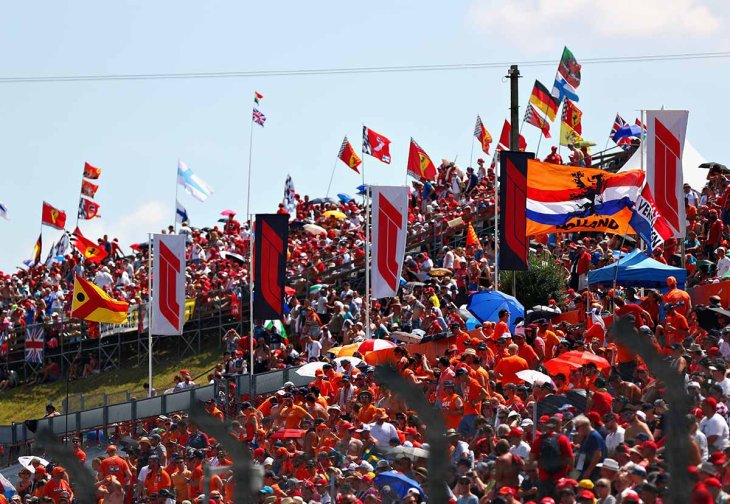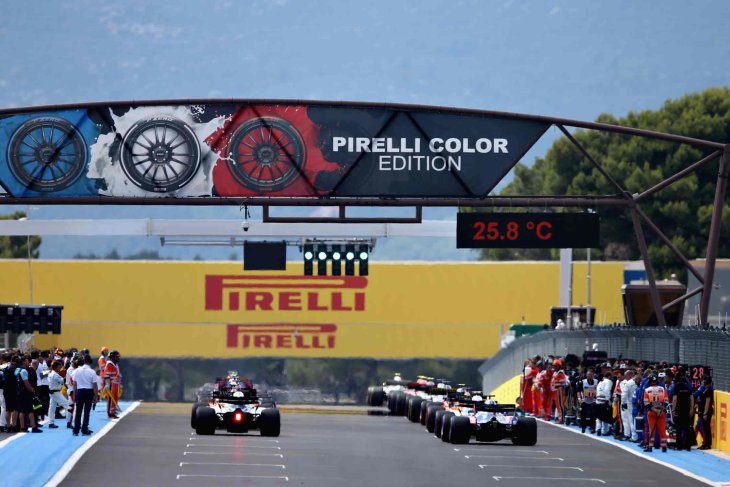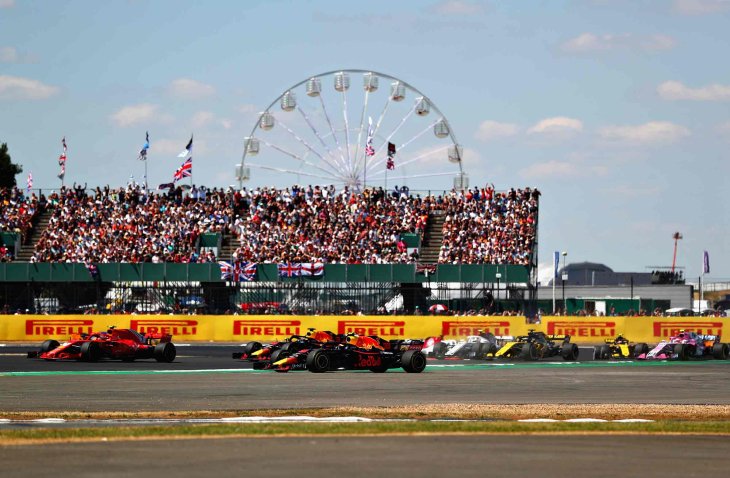
With the 2019 F1 season just around the corner, read our in-depth guide covering all the big preseason news, driver changes, rule updates and more.
After a long winter in which the teams have been beavering away in wind tunnels, agonising over telemetry, and trying their best to turn up for preseason testing with a competitive package, the new Formula 1 campaign is just around the corner.
At the front of the pack, Ferrari and Mercedes were evenly matched throughout much of 2018, only for a succession of strategic mix-ups and uncharacteristic driver errors to derail the Prancing Horse's championship hopes. Will they fare better in 2019? How will the rest of the grid get on? And what else should you be looking out for? Read on for our preview of the 2019 F1 season.
Who are the new drivers?
Three drivers, all with British connections, will be making their F1 debuts at the season-opening Australian Grand Prix on March 17th.
London-born but driving under the flag of Thailand, Alexander Albon has landed a seat at Toro Rosso, Red Bull's junior team. George Russell, last year's Formula 2 champion, will be taking the hot seat at Williams alongside the returning Robert Kubica, while fellow Brit Lando Norris gets the nod at McLaren having been part of their driver talent programme for the past two years.
As well as those three, Italian Antonio Giovinazzi will be making his full debut in F1, after standing in at Sauber for two grands prix in 2017. He'll be hoping for more consistency this time round; his previous effort saw him win plaudits for a composed drive at Melbourne, followed up by a messy second outing in Shanghai that included two big shunts.

Are there any other driver changes?
In a word, yes. After a relatively quiet couple of seasons in the driver transfer market, this year only eight of the 20 seats remain unchanged.
On top of the four drivers detailed above who are poised to enter their rookie season, two drivers are making their comebacks. Russian Daniil Kvyat is back for a third spell at Toro Rosso after a whirlwind couple of seasons that saw him make his F1 debut, win promotion to Red Bull, then get demoted back to Toro Rosso and eventually dropped altogether. And in perhaps the best good news story to hit F1 in recent years, Robert Kubica returns to the cockpit with Williams. The popular Pole, once touted as a future world champion, was left with life-changing injuries after suffering a near-fatal rally crash back in 2011, but has been handed the opportunity to pick up where he left off.
Plenty of drivers have traded one team for another, too. Among the most interesting moves sees the highly rated Monégasque Charles Leclerc stepping up to Ferrari, where he has the intimidating job of partnering Sebastian Vettel. Kimi Raikkonen moves in the other direction to Alfa Romeo (formerly known as Sauber).
Fan favourite Daniel Ricciardo took the bold decision to swap Red Bull for the somewhat unknown quantity of Renault; he'll be replaced at his former team by Pierre Gasly, who becomes the latest driver to take the well-trodden path from Toro Rosso.
At McLaren, Carlos Sainz gets the opportunity to fill the huge boots of fellow countryman Fernando Alonso, who sort-of-retired last season. Alonso's presence at the team will still be felt, as he takes up the somewhat ambiguous role of "racing ambassador". Still, Sainz is used to following in famous footsteps - his father (and namesake) is a double World Rally champion.

Any rule changes we should know about?
There are some major rule changes looming large on the horizon, as F1 bosses strive to overcome the perennial problem of how to make overtaking easier - but none of those changes will affect the 2019 season. Instead, we've seen some fairly minor rule updates:
Driver weight is now considered separately to car weight, rather than as a combined figure. This should remove the disadvantage that has affected "bulkier" drivers like Nico Hulkenberg in previous seasons.
The fuel allowance has been increased by 5kg to 110kg. It's hoped this will allow drivers to run their engines at full power at all times, rather than dialling down to save fuel.
In a bid to improve safety, drivers will now wear biometric gloves that transmit data on pulse rate and blood oxygen level to the trackside medical team.

How about the calendar?
The biggest change to the F1 calendar this season has seen the elimination of the European triple-header. Teams complained about the unmanageable workload caused by holding the 2018 French, Austrian and British grands prix on successive weekends; bosses have now pledged that if a triple-header ever returns to the calendar, it'll only be for flyaway (i.e. non-European) races.
While there are no major tweaks here, it's also worth noting that the season's third event - the Chinese Grand Prix in Shanghai - will be the landmark 1,000th world championship race.
Who had the best (and worst) of the preseason testing?
The teams decamped to the Circuit de Barcelona-Catalunya for two stints of preseason testing, with the final session coming to a close on March 1st.
Preseason is a notoriously poor guide to form. There's no way to know for certain how hard any given team or driver was pushing, so performance - positive or negative - has to be taken with a pinch of salt. The third and fourth-fastest lap times went to Renault's Nico Hulkenberg and Alexander Albon of Toro Rosso respectively, while the fastest Red Bull was Pierre Gasly in seventh. It would be a big surprise if the starting grid in Melbourne looks much like that

Most onlookers adjudged Ferrari to have had the best of preseason. They looked quick and reliable, while drivers Sebastian Vettel and Charles Leclerc were positively gushing with praise for their new car's driveability. In comparison, the Mercedes of Lewis Hamilton and Valtteri Bottas looked significantly harder to wrangle, although they were still - unsurprisingly - fast.
Red Bull's preseason is hard to decipher. They didn't do a single low-fuel, soft-tyre lap and didn't complete any of their race simulations. But Max Verstappen, never known to shy away from venting his true feelings, was decidedly upbeat over the team's prospects. "I think we have a pretty good package," he said at the end of his final run. "The engine seems to work really well. So I'm really happy about that. [Mercedes and Ferrari] are always going to be quick. I don't know where we will be, but looking at the long-run pace, I'm optimistic."
While Ferrari were probably the "winners" of preseason, there's little doubt that Williams were the losers. They missed the first two-and-a-half days (of an allotted eight days) altogether because their car wasn't ready on time, and they appeared to be comfortably slower than any other team. Since then, the team's chief technical officer Paddy Lowe - who led Mercedes to consecutive titles in 2014, 2015 and 2016 - has taken an indefinite leave of absence, and it's widely expected that he won't be returning to Williams at the end of it.
Should we expect another two-horse race for the titles?
Probably, yes. Ferrari had a supreme preseason, and Mercedes are certain to be there or thereabouts too. It would be a major surprise if anyone other than Vettel or Hamilton wins the drivers' championship, or if the constructors' crown isn't lifted by the Prancing Horse or the Silver Arrows. That being said, Mercedes believe they and Red Bull are closely matched, and Max Verstappen - now firmly installed as Red Bull's number one driver - will be itching to shake things up at the front.

